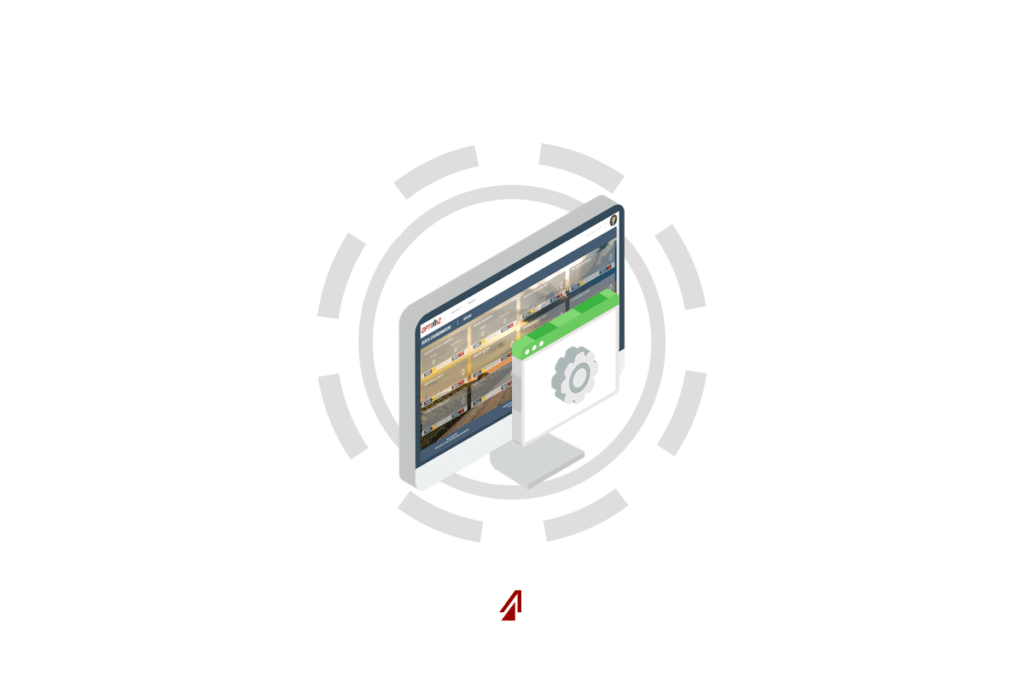Modern supply chains operate differently than previous ones. Each operation requires maximum efficiency and effectiveness for you to provide top-level customer service as well as create a strategic advantage for yourself. While these have always been important, modern technological advancements have made efficiency and effectiveness easier to attain than before. Before the internet, and IoT devices, companies may have gleaned information, but it was often siloed in hard copy reports or Excel files. With the internet, communication has improved and has allowed companies to focus on individual aspects of their supply chains to make surgical improvements. This attention to detail allows companies the efficiency and effectiveness they need to set themselves apart and create a strategic advantage.
One tool that facilitates this communication, visibility, and efficiency is the transportation management system (TMS). These software systems have been around for years, but many shippers still do not have them due to cost, complexity, or perceived lack of ROI for the supply chain. Take a look at what TMSs are and why you need one for your supply chain.
What is a TMS
A TMS is a software tool that is often part of a larger ERP system. Overall, it is a system that acts as a communication hub for customers, carriers, shippers, and others, like 3PLs, to interact with each other and with individual shipments. Each system can be purchased with set specifications or customized to your exact needs (like ProTrans Optimiz). They help break down information siloes and provide end-to-end visibility for your supply chain.
TMSs serve several functions in the supply chain management process that apply in three stages: Before, During, and After a shipment takes place.
Before
Before a shipment takes place, significant planning must be done. This is where a TMS can help. TMSs provide interactive portals for shippers and customers to meet with supply chain managers to begin the process of scheduling a shipment. Shippers and customers can submit load requests manually or automatically, and the TMS can create the shipment documents – including:
• Ship Lists
• PULs
• BOLs
• Customs Documents
• Load Tenders
Once the shipments are created, users can access the TMS to confirm, edit, or cancel shipments. Often, shippers will add details such as PO numbers, tracking requirements, or specialized instructions to the shipment. SCMs or carriers can easily view this information and plan accordingly.
From the SCM side, TMSs have information databases for shipment details. They contain information like carrier networks, facility addresses and contact information, lane history, current market details, and rates. Many contain contract information for particular customers or lanes, and many have detailed information like carrier scorecards that detail a carrier’s past performance.
These systems aggregate information from multiple sources to make information as available and usable as possible for customers to make informed decisions.
During
Supply chain managers use TMSs after a load has been submitted to provide their customers end-to-end load visibility. Customers have access to SCMs scheduling a carrier for a shipment, providing them with the load information, and tracking the load from pickup to delivery with automatic tracking software.
After a load is submitted, SCMs and planners use TMSs to find the best carriers for each load. They can use information from the TMS to find out if the lane has a contracted carrier assigned to it, find carriers who ran the shipment previously, find out historic information for the lane by date or season, as well as any other relevant information to help make decision making easier.
Once a carrier is selected, the TMS can transmit the load information (e.g. tender, BOL, etc.) to them via EDI. Load additions or corrections can be made at any time by authorized users and resent to the carriers – giving them the most accurate, up-to-date information available.
After a carrier has been dispatched, TMSs can aid with one of the most important SCM functions – load tracking. Many modern TMSs offer automatic tracking software embedded or allow for add-ons like Descartes’ Macropoint or Fourkites. The GPS systems in many trucks can send tracking information via EDI for check calls, milestones, or random location pings to the TMS for reporting. This gives customers 24/7 access to their shipment and widens their visibility. Customers can follow their shipments from the moment it leaves the shipper’s dock to the moment they receive it with real time metrics.
These metrics help make the supply chain more effective and efficient by revealing which operations work and which do not.
After
Once the shipment has been delivered, TMSs can help with the remainder of the necessary operations – document storing, data storing, and auditing.
TMSs can help with storing vital information. Documents can be sent securely via EDI or scanned into the system and are held secure in the TMS database. Modern TMSs access the cloud – giving them more storage space and greater security from hacking or accidents. Often companies will store important documents like:
• Load Tenders
• Reports
• Invoices
• PODs
In addition to documents, TMSs can store data for other purposes like lane history, rate history, trends, carrier scores, and more. This data can be formed into useful reports that TMS functions like AI can help interpret. This helps the SCMs and customers make better decisions in the future.
TMSs can allow users to conveniently audit their shipments online. Since nearly one in four freight invoices have errors, it is important for customers to have access to them. The errors often come from incorrect information such as:
• Incorrect Shipper or Receiver Information
• Mileage
• Weight
• BOL Number
• Unapplied Discounts
• Wrong Rate (Including Detention and Assessorial Charges)
Modern software makes it easy for customers to confirm they are paying their logistics providers the correct amount and can also assist with other accounting issues.
So, these are only a few of the things TMSs can help you do to become for effective and efficient. But, why do you need one?
Talk with us about how ProTrans in-house proprietary TMS can strengthen your supply chain: LEARN MORE
Why You Need a TMS
You need a TMS to help you make better decisions. One of the main objectives of most modern supply chains is to continually improve. To improve, you need to know where you started and where you are now. This will affect where you are heading.
TMSs allow you to capture and store useful data that will help you improve your supply chain. Every detail from carrier availability to shipment times can be captured and connected with varying technology and allow you to make the best decisions for your products.
Most importantly, you need a TMS to effectively communicate with your supply chain partners. With a TMS, you and your partners operate from a standardized system that allows you to effectively communicate in the same manner. The standardization also allows you to update and maintain the system easily without causing major disruptions to the supply chain. Also, when everyone is working from the same information hub, each partner is working from the same information. Parties do not have to deal with conflicting information from various localized sources; they can all communicate with the same data.
Many shippers worry that they cannot afford a TMS or that it will not provide them with the ROI necessary to justify it. However, that is not necessarily the case. TMSs are becoming cheaper and more readily available for all shippers. As for ROI, shippers that use TMS, “Experience about 5% to 10% freight cost reductions after implementing TMS,” according to Steve Banker, Vice President of Supply Chain Management at ARC Advisory Group.
If shippers still are not convinced, there is another solution – partner with a 3PL. 3PLs, like ProTrans, provide their customers with the use of a TMS that is fully stocked and customizable for the functions each customer needs. Customers are saved the cost of purchasing the system and maintaining it, while still enjoying the benefits they provide.
Features Your TMS Should Have
Once you have committed to using a TMS, or if you are partnering with a 3PL, look for these features before selecting that system.

Modern supply chains require modern tools to help them stay efficient and effective. TMS software can help provide you the visibility, efficiency, and communication you need to create a strategic advantage. Tools like TMS are becoming more affordable and options like 3PL partnership can make them even more accessible. So, no modern shipper, customer, carrier, or 3PL should be without one.
Let’s talk about your logistics needs and provide you the visibility of an advanced TMS GET STARTED



